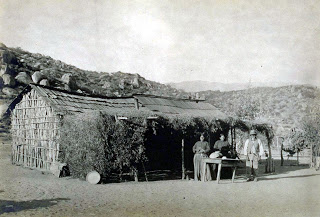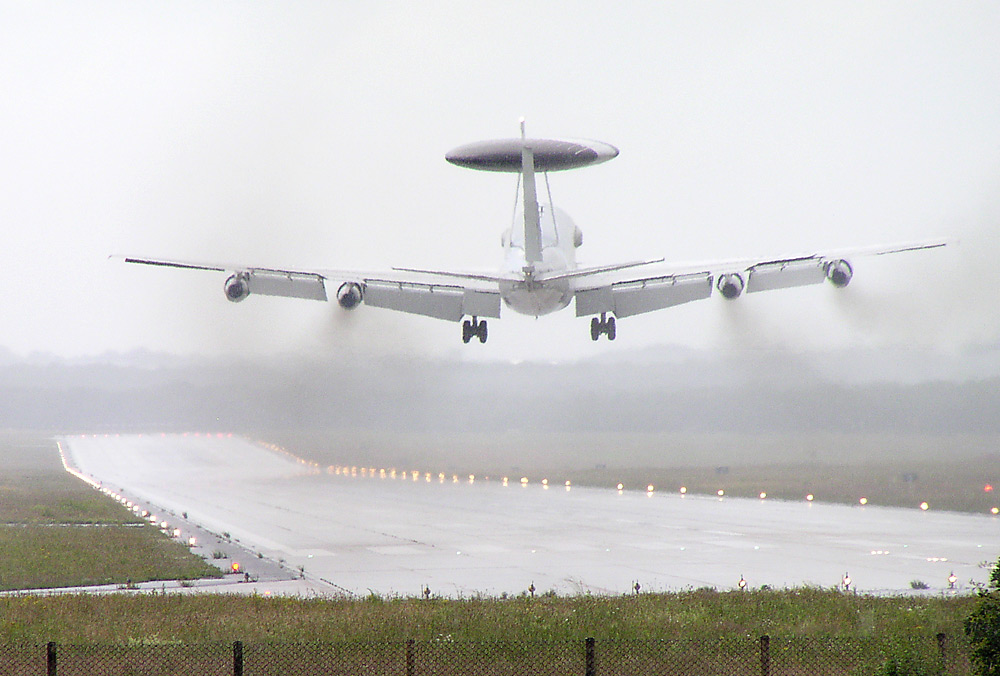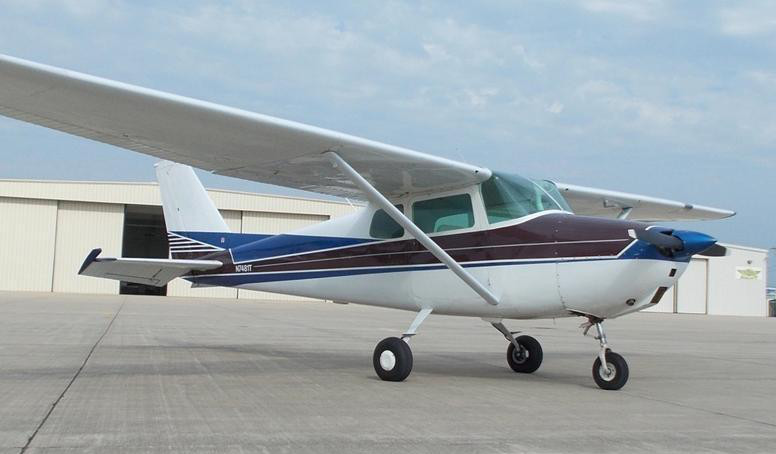|
Corona Municipal Airport
Corona Municipal Airport , formerly L66, is three miles northwest of Downtown Corona, serving Riverside County, California, United States. The airport has a few businesses, such as a cafe, "Flying Academy" flight training center, and aircraft maintenance and repair. Most U.S. airports use the same three-letter location identifier for the FAA and IATA, but Corona Municipal Airport is AJO to the FAA and has no IATA code ( Aljouf, Yemen has IATA code AJO). Facilities Corona Municipal Airport covers and has one asphalt runway, (7/25), 3,200 x 60 ft (975 x 18 m). In 2004 the airport had 68,000 aircraft operations, average 186 per day, all general aviation. 414 aircraft are based at the airport: 90% single engine, 6% multi-engine, 2% helicopter, 1% ultralight, and 1% jet. 24-hour fuel service is available all year (self serve). Incidents On March 19, 1998, a Cessna 152 clipped a private twin-engine plane, causing both planes to crash. The Cessna descended onto the corner ... [...More Info...] [...Related Items...] OR: [Wikipedia] [Google] [Baidu] |
Corona, California
Corona ( Spanish for "Crown") is a city in Riverside County, California, United States. At the 2020 census, the city had a population of 157,136, up from 152,374 at the 2010 census. The cities of Norco and Riverside lie to the north and northeast, Chino Hills and Yorba Linda to the northwest, Anaheim to the west, Cleveland National Forest and the Santa Ana Mountains to the southwest, and unincorporated Riverside County along the rest of the city's borders. Downtown Corona is approximately southeast of Downtown Los Angeles and north-northwest of San Diego. Corona, located along the western edge of Southern California's Inland Empire region, is known as the "Circle City" due to Grand Boulevard's circular layout. It is one of the most residential cities in the Inland Empire, but also has a large industrial portion on the northern half, being the headquarters of companies such as Fender Musical Instruments Corporation, Monster Beverage Corporation, and supercar manufact ... [...More Info...] [...Related Items...] OR: [Wikipedia] [Google] [Baidu] |
91 Freeway
State Route 91 (SR 91) is a major east–west state highway in the U.S. state of California that serves several regions of the Greater Los Angeles urban area. A freeway throughout its entire length, it officially runs from Vermont Avenue in Gardena, just west of the junction with the Harbor Freeway ( Interstate 110, I-110), east to Riverside at the junction with the Pomona ( SR 60 west of SR 91) and Moreno Valley (SR 60 and I-215 east of SR 91) freeways. Though signs along the portion from Vermont Avenue west to Pacific Coast Highway (SR 1) in Hermosa Beach along Artesia Boulevard are still signed as SR 91, the California Department of Transportation (Caltrans) no longer controls this portion of the highway, as this segment was relinquished to local jurisdictions in 2003. SR 91 inherited its route number from the mostly decommissioned U.S. Route 91 (US 91), which passed through the Inland Empire in a northeasterly direction on ... [...More Info...] [...Related Items...] OR: [Wikipedia] [Google] [Baidu] |
Airports In Riverside County, California
An airport is an aerodrome with extended facilities, mostly for commercial air transport. Airports usually consists of a landing area, which comprises an aerially accessible open space including at least one operationally active surface such as a runway for a plane to take off and to land or a helipad, and often includes adjacent utility buildings such as control towers, hangars and terminals, to maintain and monitor aircraft. Larger airports may have airport aprons, taxiway bridges, air traffic control centres, passenger facilities such as restaurants and lounges, and emergency services. In some countries, the US in particular, airports also typically have one or more fixed-base operators, serving general aviation. Operating airports is extremely complicated, with a complex system of aircraft support services, passenger services, and aircraft control services contained within the operation. Thus airports can be major employers, as well as important hubs for tour ... [...More Info...] [...Related Items...] OR: [Wikipedia] [Google] [Baidu] |
Robinson R44
The Robinson R44 is a four-seat light helicopter produced by Robinson Helicopter Company since 1992. Based on the company's two-seat Robinson R22, the R44 features hydraulically assisted flight controls. It was first flown on 31 March 1990 and received FAA certification in December 1992, with the first delivery in February 1993. The R44 has been the world's best-selling general aviation (GA) helicopter every year since 1999. It is one of the most-produced GA aircraft of the 21st century, with 5,941 deliveries from 2001 to 2020. Design The R44 is a single-engined helicopter with a semi-rigid two-bladed main rotor, a two-bladed tail rotor and a skid landing gear. It has an enclosed cabin with two rows of side-by-side seating for a pilot and three passengers. Tail rotor direction of rotation on the R44 is reversed compared to the R22 for improved yaw control authority. On the R44 the advancing blade is on the bottom. Development Designed during the 1980s by Frank Robinson ... [...More Info...] [...Related Items...] OR: [Wikipedia] [Google] [Baidu] |
Yoke
A yoke is a wooden beam sometimes used between a pair of oxen or other animals to enable them to pull together on a load when working in pairs, as oxen usually do; some yokes are fitted to individual animals. There are several types of yoke, used in different cultures, and for different types of oxen. A pair of oxen may be called a ''yoke of oxen'', and yoke is also a verb, as in "to ''yoke'' a pair of oxen". Other animals that may be yoked include horses, mules, donkeys, and water buffalo. Etymology The word "yoke" is believed to derive from Proto-Indo-European *yugóm (yoke), from root *''yewg''- (join, unite), and is thus cognate with ''yoga''. This root has descendants in almost all known Indo-European languages including German ''Joch'', Latin ''iugum'', Ancient Greek ζυγόν (''zygon''), Persian یوغ (''yuğ''), Sanskrit युग (''yugá''), Hittite 𒄿𒌑𒃷 (iúkan), Old Church Slavonic иго (''igo''), Lithuanian ''jungas'', Old Irish ''cuing'', and Arm ... [...More Info...] [...Related Items...] OR: [Wikipedia] [Google] [Baidu] |
Crosswind
A crosswind is any wind that has a perpendicular component to the line or direction of travel. This affects the aerodynamics of many forms of transport. Moving non-parallel to the wind's direction creates a crosswind component on the object and thus increasing the apparent wind on the object; such use of cross wind travel is used to advantage by sailing craft, kiteboarding craft, power kiting, etc. On the other side, crosswind moves the path of vehicles sideways and can be a hazard. Definition When winds are not parallel to or directly with/against the line of travel, the wind is said to have a crosswind ''component''; that is, the force can be separated into two vector components: * the headwind or tailwind component in the direction of motion, * the crosswind component perpendicular to the former. A vehicle behaves as though it is directly experiencing a lateral effect of the magnitude of the crosswind component only. The crosswind component is computed by multiplying the wi ... [...More Info...] [...Related Items...] OR: [Wikipedia] [Google] [Baidu] |
Stall (flight)
In fluid dynamics, a stall is a reduction in the lift coefficient generated by a foil as angle of attack increases.Crane, Dale: ''Dictionary of Aeronautical Terms, third edition'', p. 486. Aviation Supplies & Academics, 1997. This occurs when the critical angle of attack of the foil is exceeded. The critical angle of attack is typically about 15°, but it may vary significantly depending on the fluid, foil, and Reynolds number. Stalls in fixed-wing flight are often experienced as a sudden reduction in lift as the pilot increases the wing's angle of attack and exceeds its critical angle of attack (which may be due to slowing down below stall speed in level flight). A stall does not mean that the engine(s) have stopped working, or that the aircraft has stopped moving—the effect is the same even in an unpowered glider aircraft. Vectored thrust in aircraft is used to maintain altitude or controlled flight with wings stalled by replacing lost wing lift with engine or propeller t ... [...More Info...] [...Related Items...] OR: [Wikipedia] [Google] [Baidu] |
ERCO Ercoupe
The ERCO Ercoupe is an American low-wing monoplane aircraft that was first flown in 1937. It was originally manufactured by the Engineering and Research Corporation (ERCO) shortly before World War II; several other manufacturers continued its production after the war. The final model, the Mooney M-10, first flew in 1968 and the last model year was 1970. It was designed to be the safest fixed-wing aircraft that aerospace engineering could provide at the time, and the type continues to enjoy a faithful following. Design and development Fred Weick In 1931, aeronautical engineer Fred Weick was assistant chief of the aeronautics division of the National Advisory Committee for Aeronautics (NACA). In 1934 he asked permission to build an aircraft based on the 1931 Stout Skycar, using fabric instead of aluminum covering, and control modifications based on NACA research. Weick and a group of co-workers designed and assembled the experimental aircraft with a group of his colleagues ... [...More Info...] [...Related Items...] OR: [Wikipedia] [Google] [Baidu] |
Control Tower
Air traffic control (ATC) is a service provided by ground-based air traffic controllers who direct aircraft on the ground and through a given section of controlled airspace, and can provide advisory services to aircraft in non-controlled airspace. The primary purpose of ATC worldwide is to prevent collisions, organize and expedite the flow of air traffic, and provide information and other support for pilots. Air traffic controllers monitor the location of aircraft in their assigned airspace by radar and communicate with the pilots by radio. To prevent collisions, ATC enforces traffic separation rules, which ensure each aircraft maintains a minimum amount of empty space around it at all times. In many countries, ATC provides services to all private, military, and commercial aircraft operating within its airspace. Depending on the type of flight and the class of airspace, ATC may issue ''instructions'' that pilots are required to obey, or ''advisories'' (known as ''flight infor ... [...More Info...] [...Related Items...] OR: [Wikipedia] [Google] [Baidu] |
National Transportation Safety Board
The National Transportation Safety Board (NTSB) is an independent U.S. government investigative agency responsible for civil transportation accident investigation. In this role, the NTSB investigates and reports on aviation accidents and incidents, certain types of highway crashes, ship and marine accidents, pipeline incidents, bridge failures, and railroad accidents. The NTSB is also in charge of investigating cases of hazardous materials releases that occur during transportation. The agency is based in Washington, D.C. It has four regional offices, located in Anchorage, Alaska; Denver, Colorado; Ashburn, Virginia; and Seattle, Washington. The agency also operates a national training center at its Ashburn facility. History The origin of the NTSB was in the Air Commerce Act of 1926, which assigned the United States Department of Commerce responsibility for investigating domestic aviation accidents. Before the NTSB, the Federal Aviation Administration's (FAA; at the ... [...More Info...] [...Related Items...] OR: [Wikipedia] [Google] [Baidu] |
Cessna 172
The Cessna 172 Skyhawk is an American four-seat, single-engine, high wing, fixed-wing aircraft made by the Cessna Aircraft Company."Cessna Skyhawk" (2013), . Retrieved 2013-04-12. First flown in 1955, more 172s have been built than any other aircraft. It was developed from the 1948 but with |
Cessna 150
The Cessna 150 is a two-seat tricycle gear general aviation airplane that was designed for flight training, touring and personal use.Plane and Pilot: ''1978 Aircraft Directory'', pages 22-23. Werner & Werner Corp, Santa Monica CA, 1977. In 1977, it was succeeded in production by the Cessna 152, a minor modification to the original design. The Cessna 150 is the fifth most produced aircraft ever, with 23,839 produced. The Cessna 150 was offered for sale in named configurations that included the Standard basic model, the Trainer with dual controls, and the deluxe Commuter, along with special options for these known as Patroller options. Later, these configurations were joined by the top-end Commuter II and the aerobatic Aerobat models. In 2007, Cessna announced a successor to the Model 150 and 152, the Model 162 Skycatcher. Development Development of the Model 150 began in the mid-1950s with the decision by Cessna Aircraft to produce a successor to the popular Cessna 140 w ... [...More Info...] [...Related Items...] OR: [Wikipedia] [Google] [Baidu] |


.jpg)


.jpg)




_cropped_and_slightly_brightened.jpg)